ABANYALA BA KAKAMEGA- Language: Names of Edible birds
By Balovera Edwin Ongacho
Olunyala (K) language has names for many indigenous edible birds that are natives of their environment. The following are the names of birds which are eaten among the Abanyala of Kakamega.
Most of the grain and fruit eating birds were edible. The type of beak, past meal experiences after eating the bird and the bird's feeding habits helped Abanyala identify edible birds. Edible birds include the following:
A) SIZABLE EDIBLE BIRDS
- Amburuku

Amburuku - Ebongobongo- Olive pigeon
- Eito- Ostrich. Its meat is red. It was hunted using spears.

Eito - Ekhanga- general name for any species of guinea fowl.
- Ekhanga enyange- white guinea fowl.
- Ekhanga lya ekutusi- Crested guinea Fowl. They were slightly big and easy to hunt.

Ekhanga lya ekutusi - Ekhanga lya esileesi- vulturine Guinea fowl. Has nice tasting meat.

Ekhanga lya esilesi - Ekhanga lya olwika- helmeted guinea fowl. It has tasty white meat.
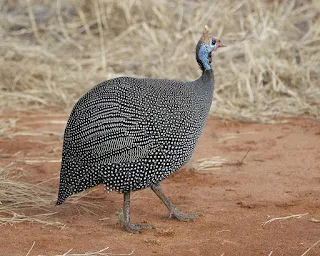
Ekhanga lya olwika - Ekhoocho- Cape Francolin. Usualy dark grey
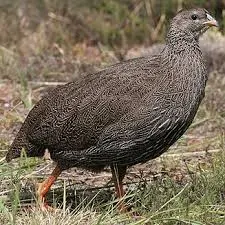
Ekhoocho - Ekhuyi ekhuyi- black stork. It was eaten roasted and never boiled. The entrails were carefully removed after sterving it for a day.

Ekhuyi khuyi - Ekhuyi Namayemba- white stock. Eaten roasted and never boiled. It was also sterved before roasting it.

Ekhuyi Namayemba - Ekulukulu- turkey

Ekulukulu - Endechia- Purple swamp hen.

Endechia - Eng'ang'a- general name for any of the ibis
- Eng'ang'a lya olwang'a- Glossy ibis. It produced black soup. It was roasted before cooking. The head, entrails and legs were not eaten.

Eng'ang'a - Eng'ang'a lya olupang'a- it had no shiny appearance and has a redish mouth with little hair on the head.

Eng'ang'a lya olupang'a - Engokho- chicken

Engokho - Engoye- Green starlin.
- Engisu- violet turnaco. Almost same to engusu in behaviour but lacking a crest on its head

Engisu - Engusu- great blue turaco (and many species of different colour- green, blue, white, black, yellow) Engusu had a crest on its head

Engusu - Eninga- African green pigeon. All birds that had similar structure and green colour feather were called eninga.

Eninga - Enyiru- red necked Francolin and Yellow necked Francolin. It had no feathers at its neck

Enyiru - Esembe- white ibis.
- Esichululu- The African quailfinch. It is a small bird similar to esindu. The white colour around the eyes makes it to look as if it has big eyes. This species, unlike the quails, can perch on trees easily.

Esichululu - Esikasawa- Managua dove
- Esindu- this is the common quail. It does not love perching on trees. It is a delicacy that was given to female and male visitors. Male one is called enyembi while the female one was called olunywenywe. Young female is called eseebe.

Esindu - Esindu eya khakhere- common bullon quail. It rarely flies; likes skulking on the ground. It was narrated that if you cover it with a basket, it turns into a frog. This was to dessuade less skilled children from opening the basket in order to prevent it from escaping.
- Esikherekeke- name for both the red winged Francolin or crested Francolin.

Esikherekeke - Esisituka- loughing dove

Esisituka - Esitulienge- red bill hornbill.
- Ewusi- Cape turtle dove

Ewusi lya mungulu - Ewusi ekasaawa- Red eyed dove. It was a dove withred eyes and eyelids.
- Ewusi elya mumachi-sandgouse. They were of different varieties that liked walking near river sands, river stones and shallow waters.
- Ewusi lya khumwalo- African mourning dove. Always made its nest near rivers.
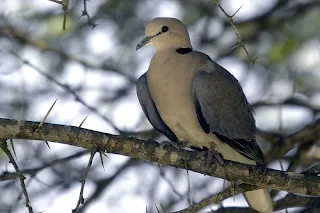
Ewusi lya khumachi - Ewusi elya mulukulu-
- Eyoyo- African black duck (and other species of ducks found in water streams.) A water duck called eyoyo ekhonge (spur winged goose) was said to cause sterility and was not eaten.

Eyoyo - Muchwe lupang'a- Black and white casked hornbill. Apart from its meat, the borne on its head was used to curve decorative wearings. Some of the same species were yellow beaked.
- Namwelirie- Southern Porchard
- Nanjekho- white/grey/bare faced go-away bird.

Nanjekho
B. SMALL EDIBLE BIRDS
Most of the smaller birds were mostly hunted by children. They could be trapped and eaten.
- Akhayindikiri- Blue Tit
- Efurusi-
- Ekhoro
- Ekhunjwe- parrot.
- Emirye- Quelea
- Endikalikani- ban shallow
- Enyanyakhanu
- Engoye
- Enyereri- blabber
- Esesese- cane portrait.
- Esonjoli- woodpecker

Esonjoli - Esimbikhira- Long tail widow bird. Its feathers were used on kings hat. Its meat was believed to be good in ensuring there is peace, understanding and reconciliation when used in amasalule. Some believed it was key ingredient in making love potion if mixed with ash from a rope used by a person to commit suicide- other herbs. Its fethers together with those of esikhokhochole were believed to be a treasure for boys, leaders and businessmen. Some had fluffy long tails.

Esimbikhira - Esifu- speckled mouse bird

Esifu - Esifu eya khumachi- the blue naped mouse bird
- Esipangalisi
- Esoko elya amatekeyi- Black weaver bird.
- Esoko elya khulukongo- African golden weaver. It is golden yellow with few black elements.

Esoko - Esoko elya khumachi- streaked weaver . It has black wings or streaked wings or black face
- Epikolio elya khulukongo- juckobin coccoo. It yellow abdomen area

Epikolio - Epikolio lya khumachi- usually black.
- Etiatiasi- Great fiscal Shriek.
- Esebeyi- honey habinger bird.
- Kenge- nightngale. Another bird recognised as a singing bird among the Abanyala- to add on esoko, ekhunjwe, mutoli and kilumbe.
- Khalinjola- Lovebird
- Kilumbe- Malabar Whistling thrush

Kilumbe - Kiriyo-
- Malebe- bee eater meropidae

Malebe - Mulimba- malachite kingfisher. It made specific noise that was timed at one hour interval. The were varieties of mulimba that were not eaten such as Nafunioko.

Mulimba - Mutoli- mocking bird. It is among the birds with a nice singing melody.

Mutoli - Nakholo- white winged widows bird. This is usually confused with esichwinjwinchwi (pied wagtail). The bird attracts mates from birds of other species hence said to have no specific clan thus the name nakholo- it is extra-clan polygamous. It has same behaviour with simbikhira.
- Nalufutu- Rainbow bird
- Nalukuku- sandpiper
- Namasa- black cackoo. Its major meals are warms, insects and caterpillars.
- Namungiri- African firefinch. This also included other similar birds that were yellow, blue, black, grey or brown.
- Namususuni- Sunbird and hummingbirds. Uncircumcised boys were dessuaded from eating it for it was to believed to cause over-bleeding at circumcision.

Namususuni - Nasing'aang'a- hornbill . This lacks the crest-like horn extension on the head.

Nasing'aang'a - Njwenjwe- lillark breasted roller. It was considered to be a very proud bird.

Njwenjwe - Ongunyi- grey wagtail. Very common at ploughing time.

Ongunyi - Opicha (swallow)- rarely perch on green twigs.

Opicha - Opichapicha- almost similar to opicha but bigger and wholly black.
- Otieto- squilla
- Otundo
- Piri
- Piriupiru- wing snapping cistocola
- Sikorosia- blackcap

Sikorosia - Tietie- cristocolas cristicola
- Tindikiti
- Wachacha
- Wandindi-
C. USES OF BIRDS
1. Birds' eggs
The main eggs eaten are those of chicken, guinea fowl, spurfowls, ostriches, ducks and quails. At times quail eggs are swallowed whole while raw for prescribed medicinal purposes.
An egg with hard shell is called eki while those with naturally soft shell from other animals are called amawuyu. Also, eggs cooked with water and omukherekha (ash-juice) with shells removed are called amawuyu and not amaki. However, soft shelled chicken egg is called ewoyawoye.
Away from home in grazing fields, the eggs are covered with raw cow-dung and roasted in fire. The water in the raw dung boils the egg without breaking its shell. After that, the shell called epwenge is removed, omunyu mufume (salt from reeds) is added before eating. The egg yolk is called emunge. While the white part is called esiteteru.
2. Birds' meat
Big and small birds are a source of meat. Abanyala, due to their proximity to forests, had names for very many birds. Some birds that looked the same were put together into one group and given one name.
Away from home in grazing fields, the eggs are covered with raw cow-dung and roasted in fire. The water in the raw dung boils the egg without breaking its shell. After that, the shell called epwenge is removed, omunyu mufume (salt from reeds) is added before eating. The egg yolk is called emunge. While the white part is called esiteteru.
2. Birds' meat
Big and small birds are a source of meat. Abanyala, due to their proximity to forests, had names for very many birds. Some birds that looked the same were put together into one group and given one name.
a. Bird traps
There were bird traps depending on the bird targeted and place of trapping.
- Owukhinga- tail switch hair was skilfully tied into knots to trap birds on nests. The skill of making this trap was called okhutootia.
- Omubaso- self snapping trap was made by skillfully bending a stick, of tensile strength, with a string tied on it. It involved some complicated mechanisms of pegs, knots, bait and sticks. The stick straightened pulling the string leading to the trapping of the bird in a knot once it stepped on the stick to eat food bait. The stick was held in position using a snapping peg.
- Esiyonjo- used to trap quails. A male quail was put in a basket and hang on a stick from where it made calls to attract others. A small path was made lined with various string traps. The last trap was hole dug at the base of the stick, covered with weak sticks and soil, into which the quail fell and got trapped.
- Emitati- hunting using arrows.
- Olukiri- used during white ants time to trap birds.
- Ekhango- trapping using sticky latex from tree fruits and stem of tree called Omulimbo or Omuwoche. This was usually applied on a three forked stick called ekhango and a live white ant placed on a thorn in the middle as a bait. A bird that came to pick the bait got trapped. It was also applied on tree branch where birds perched.
- Omulowo- a hook was used to trap birds called amang'ang'a and amayoyo by baiting with amasibili.
- Olusia- there were varieties of traps made from strings using varieties of knotting styles.
- Efumo- spears were only for hunting big birds like ostriches.
- Emburusi- use of slings
- Ebamo- the basket was placed upside down with a stick and a trigger string tied on it. Birds' food was put bellow it. The string was then pulled to trap the birds.
- Emisukuni- hunting using sticks
- Amakina (Stones)- It times the birds were hunted using stones
- Emisukuni- Sticks.
- Ewuli- a large sized bucket put facing down and supported with a stick on which a string is tied.


















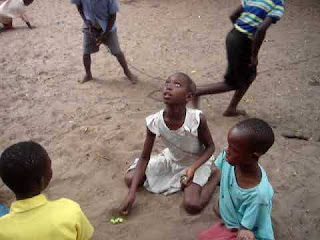
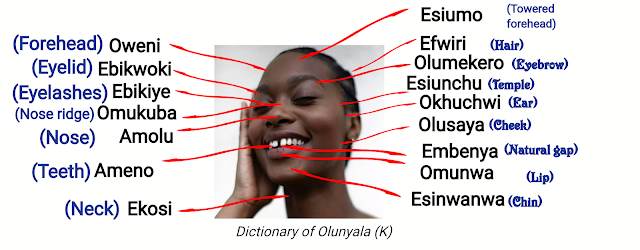

Good work! Keep the fire burning.
ReplyDelete